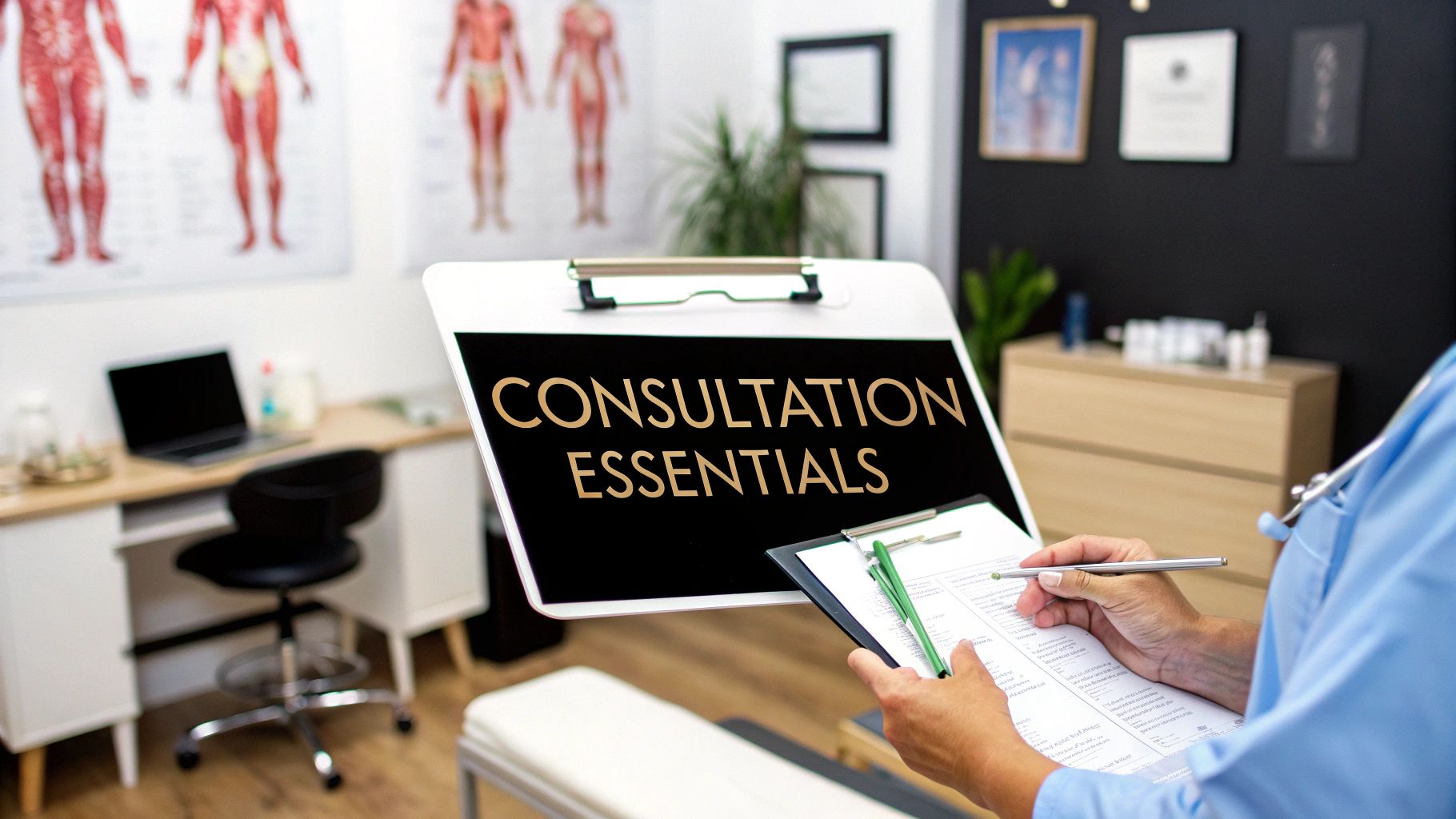
November 15, 2025
10 Essentials: questions to ask cosmetic surgeon
Learn the questions to ask cosmetic surgeon before your procedure to ensure safety, align expectations, and achieve the best results.
Oct 1, 2025
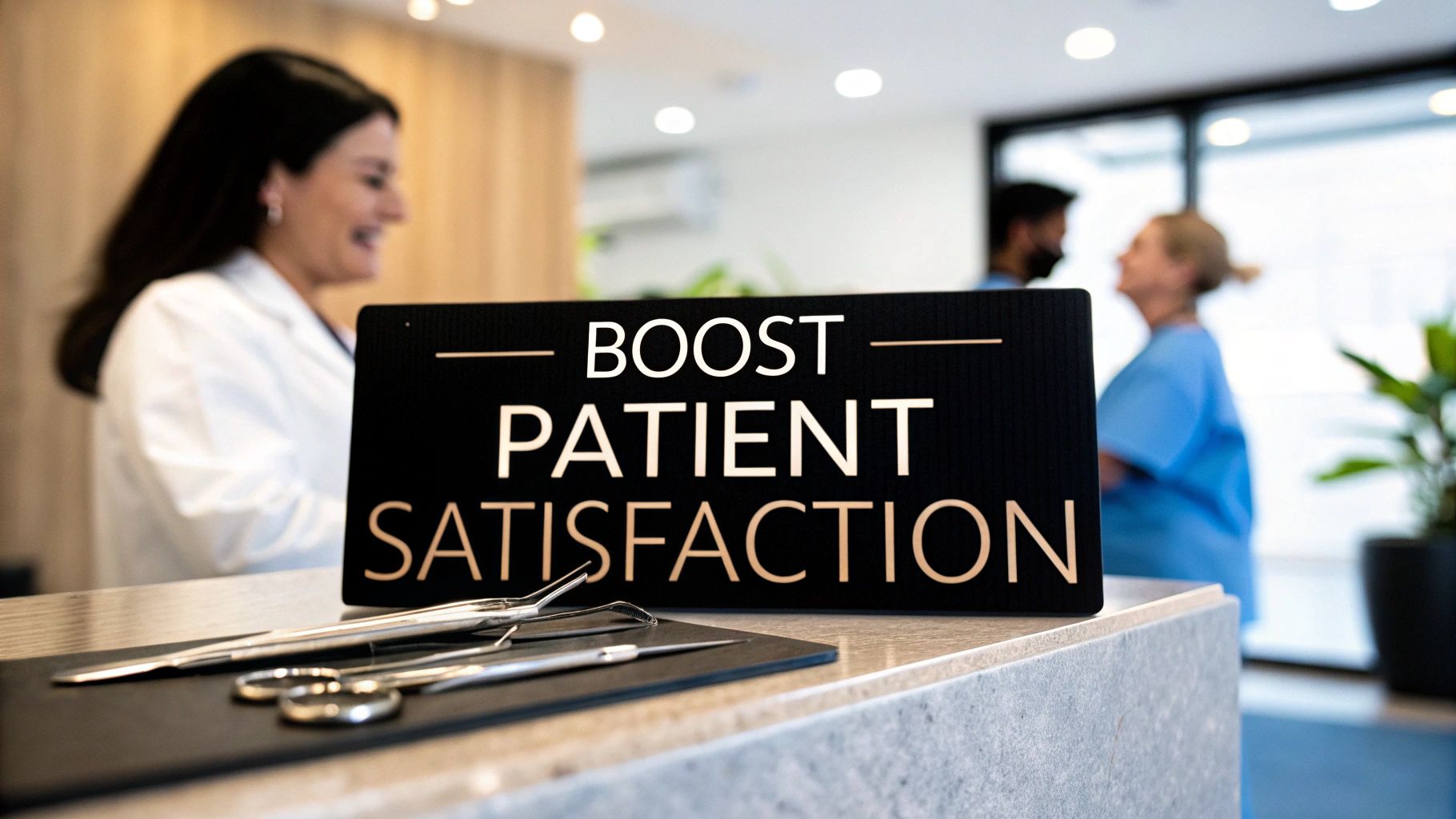
In the world of cosmetic surgery, exceptional results are just the beginning. True practice excellence is measured by the patient's entire experience, from their first inquiry to their final follow-up. Achieving superior patient satisfaction improvement isn't about a single grand gesture; it's about a series of thoughtful, well-executed strategies that make patients feel valued, understood, and genuinely cared for at every stage. This requires a deep understanding of the patient's path, from initial consideration to post-procedure care. To truly elevate the patient journey and address all touchpoints, consider a comprehensive guide to customer journey optimization to map out and refine every interaction.
This article provides a roadmap for cosmetic practices to cultivate loyalty and build a reputation for unparalleled patient-centric care. We will explore eight powerful, actionable strategies that go beyond the expected, focusing on practical implementation rather than abstract theory. Readers will learn how to enhance communication, streamline clinic operations, leverage technology for convenience, and create an environment that prioritizes comfort and trust. These proven methods are designed to transform your practice, turning satisfied patients into your most enthusiastic advocates and setting a new standard for care in the aesthetic field.
Patient-centered communication is a foundational strategy for patient satisfaction improvement, shifting the focus from a purely clinical exchange to a collaborative partnership. This approach prioritizes active listening, empathy, and clear dialogue, ensuring patients feel heard, respected, and involved in every decision. It's about understanding their unique goals, fears, and expectations for cosmetic surgery.
This method transforms the clinical consultation into a meaningful conversation, directly impacting how patients perceive their quality of care. When patients feel genuinely understood, their trust in the practice deepens, laying the groundwork for a positive experience from the initial inquiry to post-operative follow-ups.

This communication style involves training the entire team, from the front desk to the surgical staff, to engage with patients empathetically. A well-known framework is the Mayo Clinic's AIDET model (Acknowledge, Introduce, Duration, Explanation, Thank You), which provides a structured yet personal way to interact with every patient. The goal is to demystify the process and build rapport, making patients feel safe and valued.
For instance, instead of just listing procedural risks, a surgeon using this approach would first ask about the patient's specific concerns and then tailor the explanation to address those fears directly. This is a crucial element in boosting patient satisfaction, especially in a cosmetic practice where personal goals are paramount.
To effectively integrate patient-centered communication, consider these steps:
Institutions like the Cleveland Clinic have demonstrated the power of this focus, using extensive communication training to achieve top-quartile patient satisfaction scores.
A systematic approach to minimizing patient wait times is a powerful lever for patient satisfaction improvement. This strategy addresses one of the most common and frustrating aspects of a healthcare visit by optimizing scheduling, streamlining workflows, and expanding access. For a cosmetic practice, where patients expect a premium, customer-focused experience, long waits can significantly undermine perceived value and care quality.
This method focuses on respecting the patient's time as a core component of their care journey. By proactively managing clinic flow and appointment availability, a practice can demonstrate efficiency and a deep commitment to the patient experience, turning a potential point of friction into a competitive advantage.
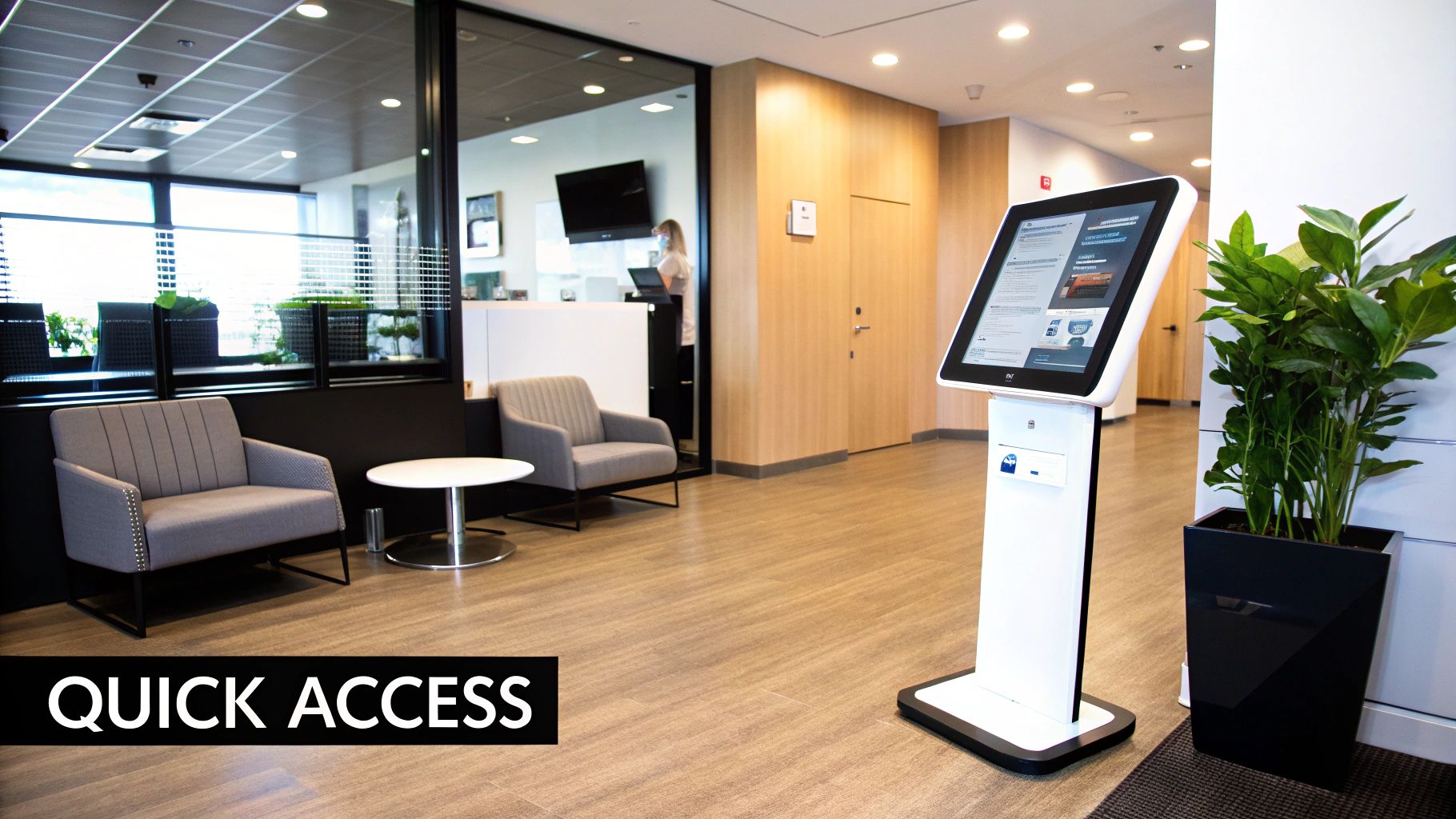
This strategy involves a deep analysis of every step in the patient journey, from scheduling an appointment to checking out after a procedure. It draws from principles popularized by the Institute for Healthcare Improvement (IHI) and Lean Healthcare methodologies, which aim to eliminate waste and inefficiencies. The goal is to create a seamless, predictable, and timely experience for every patient.
For example, a practice might identify that pre-procedure paperwork is a major bottleneck. By implementing a digital check-in process through a patient portal, the practice can cut down lobby wait times and ensure the clinical team has all necessary information before the patient even arrives. This operational efficiency is a key driver of patient satisfaction improvement.
To effectively reduce wait times and improve access, consider these steps:
Pioneering institutions like Virginia Mason Medical Center have used similar lean principles to reduce patient wait times by as much as 85%, demonstrating the profound impact operational efficiency can have on the patient experience.
Staff training and development are essential investments for patient satisfaction improvement, transforming a collection of skilled individuals into a cohesive, patient-focused team. These programs go beyond clinical proficiency, equipping every staff member with the crucial soft skills, service-oriented mindset, and consistent protocols needed to deliver an exceptional patient journey. The goal is to ensure every interaction, from the initial phone call to the final follow-up, reflects the practice's commitment to excellence.
This strategy directly impacts the patient experience by standardizing high-quality service and empowering staff to handle diverse patient needs with confidence and empathy. A well-trained team anticipates patient concerns, communicates with clarity, and resolves issues proactively, which significantly boosts patient confidence and their overall perception of the care they receive.
This approach involves implementing structured, ongoing educational initiatives for all patient-facing roles. Renowned models like the Ritz-Carlton's service excellence methodology and the Studer Group's Evidence-Based Leadership framework provide proven templates that can be adapted for a cosmetic surgery practice. These programs focus on creating a culture where every team member feels responsible for the patient experience.
For example, a practice might use simulation exercises where staff role-play handling a nervous pre-operative patient or an individual with post-operative complications. This practical training ensures that the team responds not just correctly, but also with compassion and professionalism, turning potentially negative situations into opportunities to build trust. A well-prepared team is a cornerstone of patient satisfaction improvement.
To build a robust training program that elevates your patient experience, consider these steps:
Integrating technology is a powerful strategy for patient satisfaction improvement, focusing on digital tools that streamline patient interactions and enhance convenience. This approach uses patient portals, mobile apps, and automated systems to empower patients with easy access to information, scheduling, and communication, reducing friction throughout their healthcare journey. It meets the modern patient's expectation for seamless, on-demand digital experiences.
This strategic use of technology directly impacts patient perceptions by making healthcare management simpler and more accessible. When patients can easily book appointments, view their records, or communicate with their care team from their smartphone, it creates a sense of control and efficiency, fostering a more positive and modern relationship with the practice.

This involves implementing a suite of user-friendly digital solutions that serve patients at different touchpoints. Leading systems like Epic’s MyChart or athenahealth's patient portal provide a central hub for patients to manage their care. These platforms consolidate appointment scheduling, secure messaging with providers, prescription refill requests, and access to health records into one intuitive interface.
For example, a cosmetic practice can use a patient portal to send automated pre-operative instruction reminders or allow patients to securely upload progress photos post-surgery. To further enhance the patient experience and streamline operations, exploring the benefits of modern technology is key, as highlighted by why healthcare facilities are switching to digital check-in systems in healthcare facilities to reduce wait times and paperwork.
To effectively integrate technology for enhanced patient convenience, consider these steps:
Healthcare giants like Kaiser Permanente have seen massive success with this approach, with its "My Health Manager" portal boasting over 90% patient adoption due to its convenience and comprehensive features.
Facility Environment and Comfort Improvements focus on enhancing the physical space to create a welcoming, serene, and healing-focused atmosphere. This strategy recognizes that the clinic’s ambiance significantly influences patient perceptions, anxiety levels, and overall satisfaction. It moves beyond clinical sterility to incorporate elements of hospitality and comfort, ensuring patients feel relaxed and valued from the moment they arrive.
This approach transforms the practice from a purely medical setting into a reassuring and pleasant environment, which is a powerful tool for patient satisfaction improvement. A positive physical experience can ease patient anxiety, build trust, and reinforce the high quality of care provided, making the entire journey more memorable and positive. Learn more about how a premium environment enhances the patient experience by exploring our state-of-the-art facility.
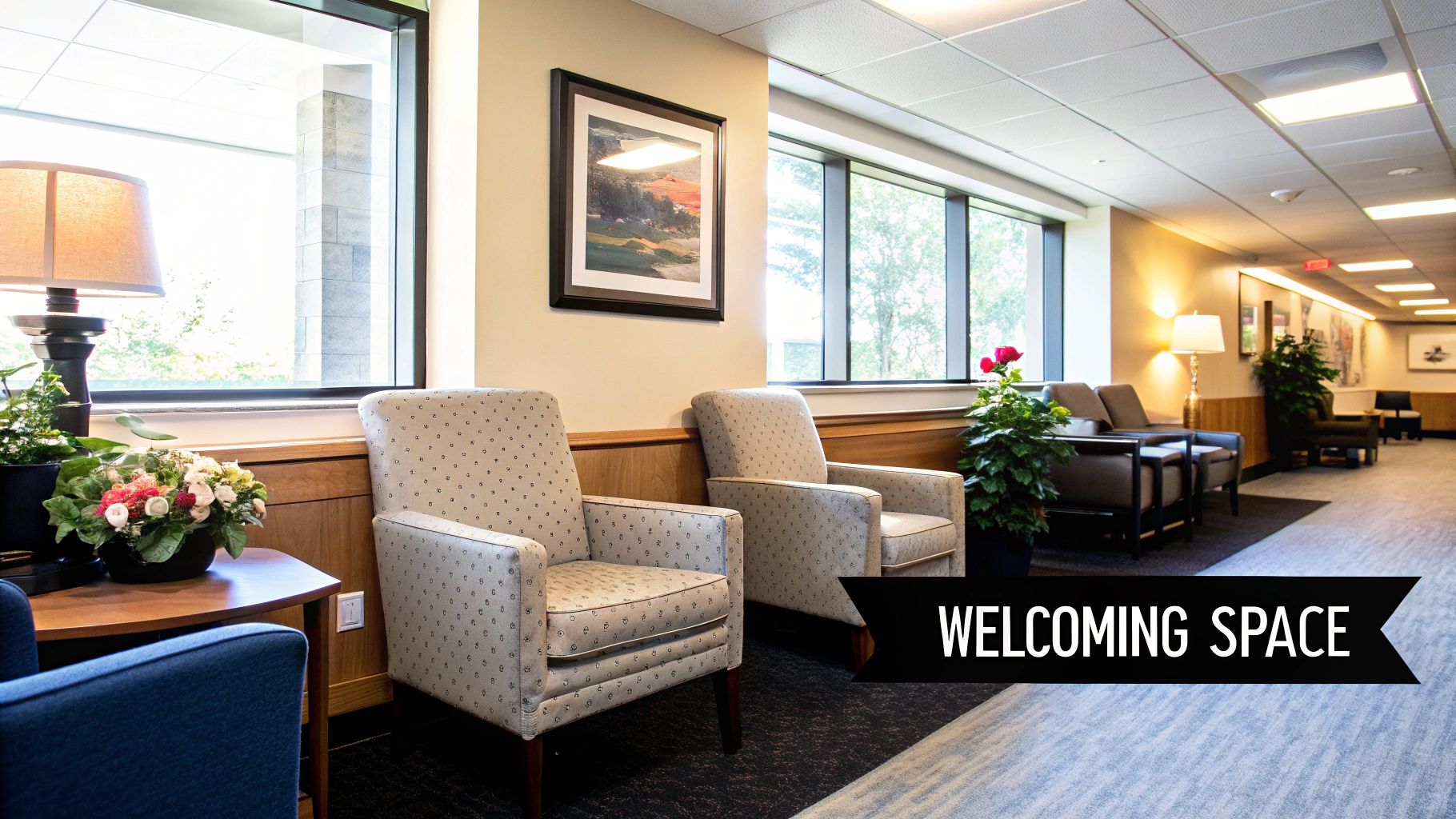
This method involves applying principles of evidence-based design, which uses research to link the physical environment to patient outcomes. It’s about making intentional choices in lighting, color schemes, furniture, and amenities to reduce stress and promote a sense of well-being. Organizations like Planetree and The Center for Health Design have championed this patient-centered approach to healthcare environments.
For instance, a cosmetic practice might replace harsh fluorescent lighting with softer, dimmable options, provide comfortable, private seating areas instead of a crowded waiting room, and offer amenities like complimentary beverages or Wi-Fi. Memorial Sloan Kettering's use of healing gardens and art therapy spaces demonstrates how non-clinical elements can create a profoundly supportive atmosphere.
To effectively upgrade your facility's environment and comfort, consider these steps:
Real-time patient feedback systems are dynamic tools for patient satisfaction improvement, moving beyond traditional, delayed surveys to capture patient sentiment as it happens. This approach allows a cosmetic practice to collect immediate insights on patient experiences, enabling swift service recovery and continuous quality enhancement. It's about opening an ongoing dialogue rather than waiting for a single, post-procedure review.
This method transforms feedback from a historical record into an actionable, in-the-moment resource. When practices can identify and address a patient's concern before they even leave the building, it demonstrates an exceptional commitment to care, significantly boosting trust and preventing minor issues from escalating into negative online reviews.
Implementing a real-time system involves using technology to gather feedback at various touchpoints during the patient journey. This can range from SMS-based surveys sent immediately after an appointment to dedicated tablets or QR codes in the waiting room. The goal is to make providing feedback effortless for the patient and to instantly route that information to the appropriate staff for review and action.
For example, a patient might use a tablet to discreetly note that their wait time was longer than expected. This alert can be sent directly to the practice manager, who can then apologize to the patient in person, offer a beverage, and investigate the scheduling delay. This immediate response demonstrates that the practice values the patient's time and feedback, turning a potential negative into a positive interaction.
To effectively integrate a real-time feedback system, consider these steps:
Pioneers in this space, such as Press Ganey and NRC Health, have shown that continuous monitoring allows healthcare organizations to proactively manage the patient experience and achieve higher satisfaction scores.
Care coordination and continuity programs are systematic approaches designed to create a seamless patient journey across different departments, providers, and care settings. This strategy is a key driver of patient satisfaction improvement because it eliminates communication gaps and ensures patients feel supported and guided, rather than lost in the system. The focus is on providing consistent, well-managed care from the initial consultation through surgery and post-operative recovery.
By treating the patient's entire experience as a single, integrated process, practices can significantly reduce patient anxiety and prevent frustrating errors or delays. This continuity builds profound trust and reassures patients that a dedicated team is managing every detail of their care, which is especially important in the elective and personal nature of cosmetic surgery.
This strategy involves creating structured pathways and assigning a central point of contact to oversee the patient's journey. This is often a dedicated care coordinator or patient navigator who acts as the liaison between the patient, the surgeon, anesthesiology, and post-operative care teams. Their role is to ensure all information is shared, appointments are scheduled logically, and the patient's questions are answered promptly.
A prime example is Geisinger Health System's ProvenCare model, which standardizes care for specific procedures into a bundled payment, forcing tight coordination to maintain quality and efficiency. Similarly, Kaiser Permanente's integrated model ensures that every provider has access to the same patient record, creating a cohesive experience.
To implement effective care coordination in your practice, consider these steps:
Leading organizations like the Institute for Healthcare Improvement have championed these programs, demonstrating their direct link to higher safety, better outcomes, and a significant boost in patient satisfaction.
Patient and family engagement initiatives are comprehensive programs that transform the care process by actively involving patients and their trusted support systems as partners. This approach goes beyond simple communication, embedding patients and their families in decision-making, education, and even policy improvement. It acknowledges that an engaged support network is critical for better outcomes and a superior patient experience, especially in cosmetic surgery where recovery and emotional support are key.
This strategy fundamentally boosts patient satisfaction improvement by empowering patients, which enhances their sense of control and confidence in the practice. When families are included and educated, they become effective co-managers of the patient’s care, reducing anxiety and improving adherence to post-operative instructions. This collaborative environment fosters a deep-seated loyalty and trust in your practice.
This model involves creating formal structures that allow patient and family voices to be heard and acted upon. It's about moving from a "doing to" to a "doing with" philosophy of care. Organizations like the Institute for Patient- and Family-Centered Care have pioneered frameworks that help practices integrate this approach into their daily operations, ensuring it becomes a part of the organizational culture rather than just a one-off project.
For example, a cosmetic practice could create a Patient Advisory Council composed of former patients to review educational materials or provide feedback on the pre-operative experience. Another example is developing shared decision-making tools for treatment options, like those used at the Dana-Farber Cancer Institute, allowing patients and surgeons to collaboratively choose the best path forward based on clinical evidence and personal values. As you'll see when you learn more about why patient satisfaction matters, this deep involvement is a powerful driver of positive reviews.
To successfully integrate patient and family engagement, consider these steps:
Embarking on a mission for patient satisfaction improvement is not about checking boxes off a list; it is about fundamentally embedding a culture of excellence into the very DNA of your cosmetic surgery practice. Throughout this guide, we've explored eight powerful strategies, moving beyond generic advice to provide a concrete roadmap for creating an unparalleled patient experience.
We began with the cornerstone of any successful practice: patient-centered communication. This involves more than just explaining procedures; it means actively listening, managing expectations with honesty, and ensuring every patient feels heard and respected. We then addressed a common friction point, reducing wait times, and highlighted how optimizing schedules and improving access can immediately signal your respect for a patient's time and commitment.
True transformation occurs when these strategies become daily habits. Investing in staff training ensures your entire team, from the front desk to the clinical staff, is aligned in delivering compassionate and professional care. Similarly, integrating technology for patient convenience-such as online scheduling and secure messaging-empowers patients and streamlines their journey.
The physical space itself speaks volumes. By focusing on your facility's environment and comfort, you create a serene and welcoming atmosphere that reduces anxiety and builds confidence. This commitment to the patient's perspective is further strengthened by implementing real-time feedback systems, which turn patient insights into actionable improvements and demonstrate that their voice matters.
Ultimately, achieving superior patient satisfaction requires a holistic view. Implementing care coordination programs ensures a seamless experience from the initial consultation through post-operative follow-ups, eliminating gaps and confusion. This is complemented by patient and family engagement initiatives, which build a supportive community around the patient and foster a deeper, more trusting relationship with your practice.
The journey toward exceptional patient satisfaction is continuous. It requires commitment, a willingness to listen, and the dedication to constantly refine your processes. Start by identifying one or two key areas from this list that resonate most with your practice's goals. Implement the changes, gather data, and celebrate the small wins. By doing so, you are not just improving survey scores; you are building a legacy of trust, loyalty, and truly transformative patient care. This persistent focus on patient satisfaction improvement is what distinguishes a good practice from a legendary one.
Ready to experience a practice where patient satisfaction is the highest priority? The team at Cape Cod Plastic Surgery, led by Dr. Marc Fater, exemplifies these principles, providing expert care in an environment designed for your comfort and confidence. Discover the difference a patient-first approach makes by visiting Cape Cod Plastic Surgery to learn more or schedule your consultation.

November 15, 2025
Learn the questions to ask cosmetic surgeon before your procedure to ensure safety, align expectations, and achieve the best results.
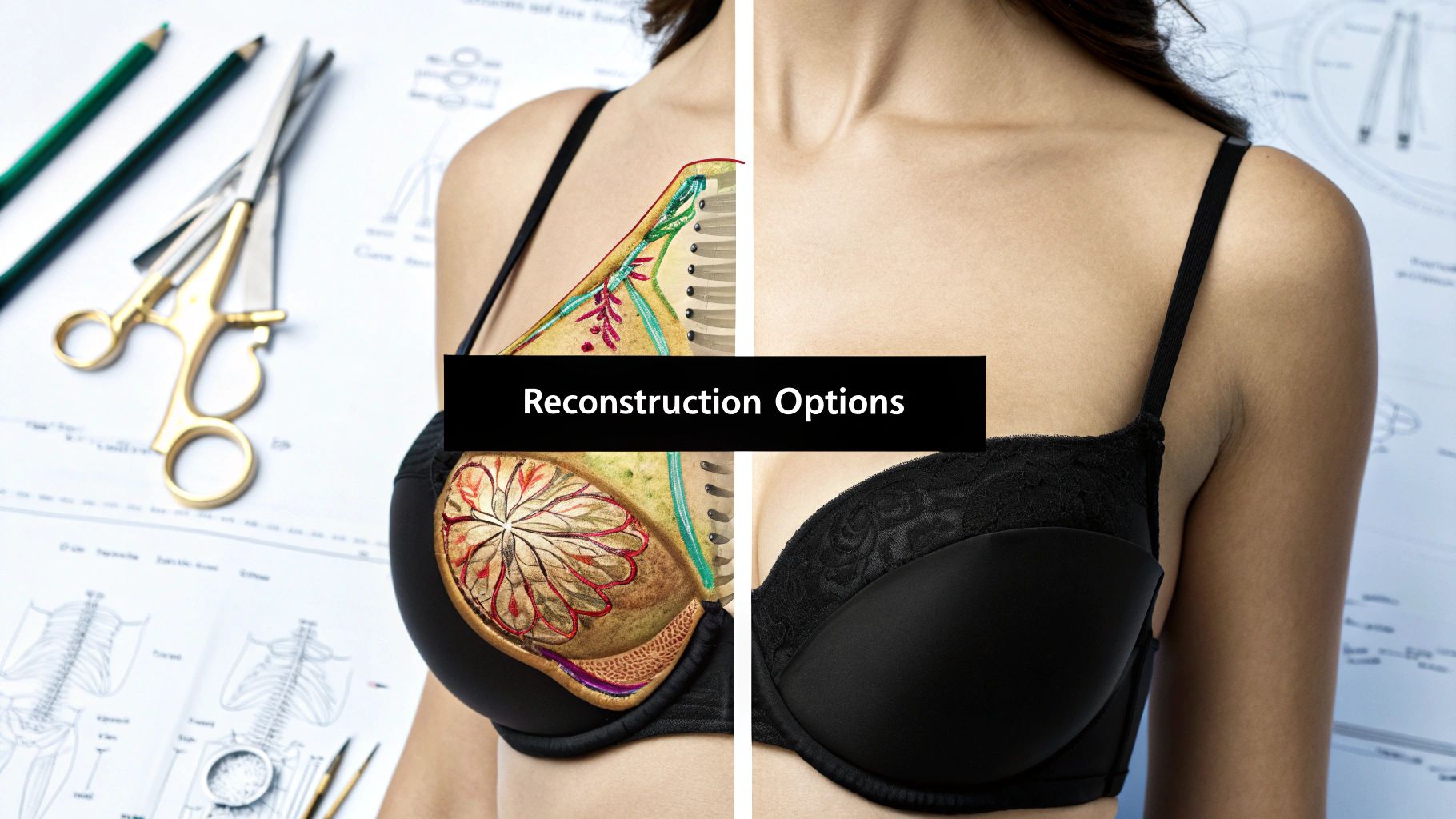
November 14, 2025
Discover breast reconstruction options after mastectomy: implants vs flap, timing, and recovery tips to help you decide.

November 14, 2025
Exploring Effective Non-Surgical Options for Skin Tightening